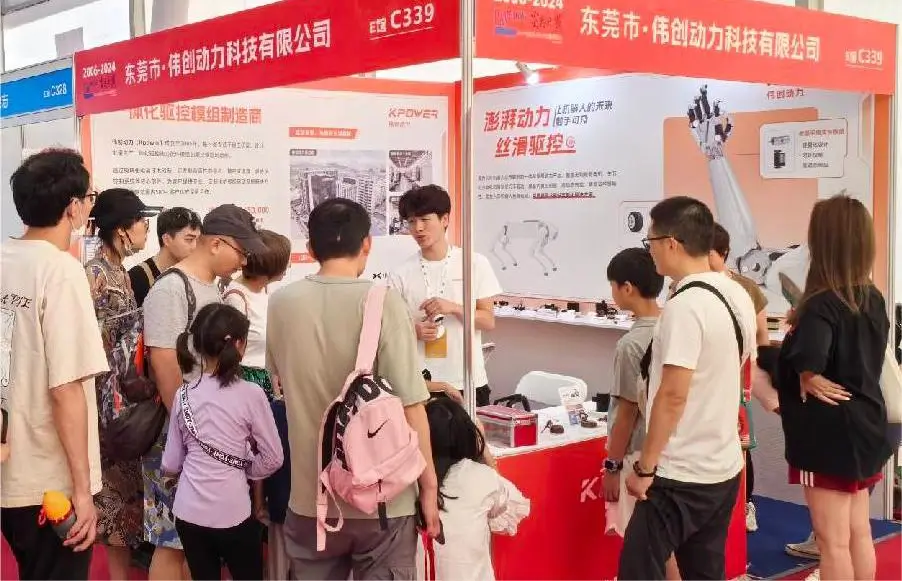In the realm of modern automation, few components have transformed industries as profoundly as servo motors paired with their dedicated drivers. From manufacturing lines to robotics, these compact yet powerful devices are quietly revolutionizing how machines move, think, and perform with unmatched accuracy. If you're fascinated by the seamless dance of automated systems and eager to understand the engine behind the scenes, this exploration into servo motors and drivers will shed illuminating light on their roles, advantages, and future potential.

The essence of a servo motor
At its core, a servo motor is a type of rotary or linear actuator that allows for precise control of angular or linear position, velocity, and acceleration. Unlike traditional motors, which simply run continuously when powered, servo motors are designed to respond to external control signals, allowing for fine-tuned movements. This capability makes them ideal for applications demanding high precision, quick response, and reliable repeatability.
Internal to the servo motor is a feedback device—often an encoder or resolver—that constantly monitors its position and velocity. This feedback mechanism communicates with the driver, creating a closed-loop system that constantly adjusts the motor’s operation to meet the exact position and speed commands. This continuous feedback loop ensures that the motor's actual position aligns precisely with its intended target, making servos invaluable in tasks where accuracy is paramount.
But not all servo motors are created equal. They come in various forms—brushless DC (BLDC), AC, axial flux, or hybrid designs—each suited for different applications based on power requirements, speed ranges, and environmental conditions. Regardless of type, all serve the same fundamental purpose: precise, controlled motion.
The pivotal role of a servo driver
Complementing the servo motor is the servo driver, also called a servo amplifier or servo controller. Think of it as the brain and muscle, interpreting commands from a control system—like a PLC, CNC, or robotics controller—and translating these instructions into electrical signals that drive the motor. It also processes the real-time feedback from the motor's sensors, adjusting power delivery to achieve the desired motion profile.
A good servo driver offers more than just power amplification. It possesses advanced features: programmable parameters, fault detection and diagnostics, smooth acceleration and deceleration profiles, and adaptive control algorithms. All these functions work together to enhance stability, safety, and performance.
One of the key features of modern servo drivers is their ability to handle multiple axes—enabling synchronized multi-motor movements—along with network communication capabilities like EtherCAT, ProfiNet, or EtherNet/IP. This integration facilitates seamless communication across complex automation systems, resulting in synchronized, high-precision operations.
How do servo motors and drivers work together?
Imagine conducting a symphony orchestra; the conductor sets the tempo, signals, and dynamics, while the musicians perform with synchronized harmony. The servo driver is the conductor, issuing commands based on the control system input, while the servo motor is the musician executing those commands with finesse.
When a control system sends a movement command—say, moving an industrial robotic arm to a specific position—the driver receives this signal and sends the appropriate currents to the motor windings. The feedback device within the motor constantly measures how far the motor has turned or how fast it’s spinning. If the motor is lagging behind or overshooting, the driver adjusts the power instantly, ensuring the arm reaches exactly where it needs to be.
This closed-loop system is incredibly responsive, enabling rapid, accurate positioning even under changing load conditions. It’s the reason why servo-driven machinery can achieve such high throughput and repeatability.
Why are servo motors and drivers vital in industry?
Precision, speed, flexibility, and efficiency. These are the pillars of advanced manufacturing and automation, and servo systems excel in all.
Manufacturing and CNC machining: Crafting tiny, intricate parts demands absolute positional accuracy. Servo motors ensure that each cut, drill, or assemble operation is executed flawlessly, boosting quality and reducing waste.
Robotics: Whether in car assembly lines or surgical robots, servo systems give robots the dexterity and sensitivity to perform complex tasks rapidly and accurately.
Printing and packaging: High-speed, high-precision control of print heads and packaging machinery leads to consistent quality and minimal downtime.
Aerospace and defense: Precision navigation and control systems rely heavily on servo technology for stability and responsiveness.
Advantages that make servo motors and drivers stand out
High accuracy and repeatability: Enabled by feedback mechanisms, ensuring tasks are performed exactly as designed.
Dynamic response: Servo systems can accelerate, decelerate, and change directions swiftly, supporting complex, multi-axis movements.
Efficiency: Optimized power consumption and reduced operational waste translate to cost savings.
Flexibility: Programmable parameters permit customization for diverse applications, from conveyor belts to precision instrumentation.
Diagnostics and safety: Modern servo drives monitor system health, detect faults, and protect the equipment—a safeguard for long-term operations.
Emerging trends shaping servo technology
As we gaze into the future, several fascinating trends are catalyzing the evolution of servo motors and drivers:
Integration with Industry 4.0: Increased connectivity and analytics enable predictive maintenance, minimizing downtime.
Advanced control algorithms: Adaptive and AI-driven controls improve precision and responsiveness further.
Miniaturization and energy efficiency: Smaller, more powerful servo units reduce space requirements and energy consumption.
Wireless and decentralized control: Innovations aim to make servo systems more adaptable to various layouts and dynamic environments.
Stay tuned for the next part, where we will delve into detailed applications, technological innovations, and how choosing the right servo system fuels a successful automation journey.
Leveraging innovations in modular drive technology, Kpower integrates high-performance motors, precision reducers, and multi-protocol control systems to provide efficient and customized smart drive system solutions.




































